The Samsung Galaxy S6 and S6 edge Review
by Joshua Ho on April 17, 2015 9:00 AM EST- Posted in
- Smartphones
- Samsung
- Mobile
- Galaxy S6
- Galaxy S6 Edge
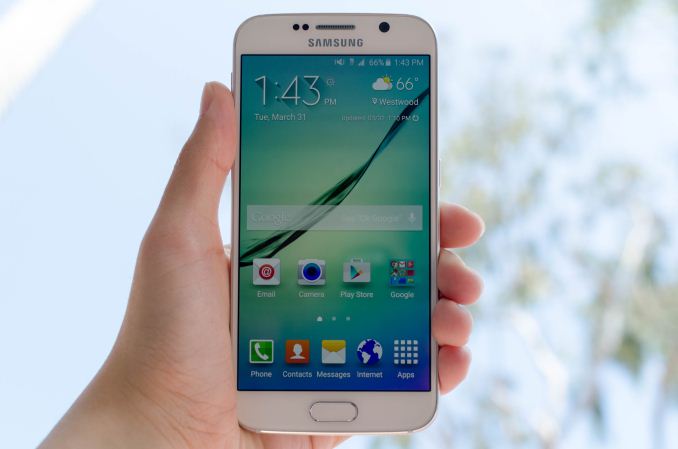
As recently as the Galaxy S5, Samsung had a fundamentally different strategy from companies like HTC and Apple. While design wasn’t ignored completely, Samsung Mobile had a different set of priorities. In general, it felt like Samsung wanted the phone to have every feature possible to please every possible potential customer. Features like a removable battery and microSD card slot seemed to be a crucial point of differentiation. TouchWiz focused on delivering a full suite of applications even if they were pretty much redundant when compared to Google’s applications. Samsung also seemed to cost-optimize their external shells, favoring polymer builds over glass or aluminum. Since the Galaxy S, this strategy paid off handsomely. With the help of strong marketing, Samsung proceeded to dominate the Android market from the days of the Galaxy S2, to the point that almost no other Android OEM was relevant in terms of market share.
However, Samsung’s tried and true strategy failed with the Galaxy S5. Fundamentally, Samsung had always been competing with Apple and their iPhone line-up at the high end, but Samsung consistently held a price advantage. The real problem was the rise of low-cost flagship phones, which squeezed Samsung significantly. Other OEMs were able to justify their high-end pricing by delivering a polished software experience and premium hardware design. In comparison to these relatively cheap phones which delivered largely the same experience and hardware, Samsung’s sales crumbled and the Galaxy S5 didn’t meet sales expectations.
This brings us to the Galaxy S6, which is supposed to be Samsung’s attempt at refocusing their product design and lineup. Design has become a major priority, and the Galaxy S6 is a radical departure from previous design in terms of almost every design choice. The Galaxy S6 represents the best that Samsung can make to some extent, as a great deal of the phone is composed of Samsung-made parts to achieve maximum vertical integration as seen in the specs below.
| Samsung Galaxy S5 | Samsung Galaxy S6 | Samsung Galaxy S6 Edge | |
| SoC | MSM8974ACv3 2.45 GHz Snapdragon 801 | Exynos 7420 2.1/1.5GHz A57/A53 | Exynos 7420 2.1/1.5GHz A57/A53 |
| RAM | 2GB LPDDR3 | 3GB LPDDR4-1552 | 3GB LPDDR4-1552 |
| NAND | 16/32GB NAND + microSD | 32/64/128GB NAND | 32/64/128GB NAND |
| Display | 5.1” 1080p SAMOLED HD |
5.1” 1440p SAMOLED |
5.1” 1440p SAMOLED, Dual Edge |
| Network | 2G / 3G / 4G LTE (Qualcomm MDM9x25 UE Category 4 LTE) | 2G / 3G / 4G LTE (Category 6 LTE) | 2G / 3G / 4G LTE (Category 6 LTE) |
| Dimensions | 142 x 72.5 x 8.1 mm, 145 grams | 143.4 x 70.5 x 6.8mm max, 138 grams | 142.1 x 70.1 x 7.0mm max, 132 grams |
| Camera | 16MP (5132 x 2988) Rear Facing with 1.12 µm pixels, 1/2.6" CMOS size, 31 mm (35mm effective), f/2.2 | 16MP (5132 x 2988) Rear Facing w/ OIS, f/1.9, object tracking AF | 16MP (5132 x 2988) Rear Facing w/ OIS, f/1.9, object tracking AF |
| 2MP Front Facing | 5MP Front Facing, f/1.9 | 5MP Front Facing, f/1.9 | |
| Battery | 2800 mAh (10.78 Whr) | 2550 mAh (9.81 Whr) | 2600 mAh (10.01 Whr) |
| OS | Android 4.4 w/TouchWiz |
Android 5 (64-bit) w/TouchWiz | Android 5 (64-bit) w/TouchWiz |
| Connectivity | 802.11a/b/g/n/ac 2x2 + BT 4.0 (BCM4354), USB3.0, GPS/GNSS, MHL, DLNA, NFC |
2x2 802.11a/b/g/n/ac + BT 4.1 (BCM4358), USB2.0, GPS/GNSS, NFC |
2x2 802.11a/b/g/n/ac + BT 4.1 (BCM4358), USB2.0, GPS/GNSS, NFC |
| Wireless Charging | N/A | WPC 1.1 (4.6W) & PMA 1.0 (4.2W) |
WPC 1.1 (4.6W) & PMA 1.0 (4.2W) |
| Fingerprint Sensor | Swipe | Touch | Touch |
| SIM Size | MicroSIM | NanoSIM |
NanoSIM |
Design
There’s a lot of ground to cover in the Galaxy S6 and S6 edge, but probably the most immediate change is to the design. The Galaxy S6 is a unibody design, with no apparent screws. This does mean that there’s no removable battery or microSD slot, which shouldn’t be a problem for most people although this may be enough for some to write off this phone completely.
The back cover is now glass instead of plastic, and is attached to the phone with glue instead of plastic latches. Regardless of color or model, Samsung has placed an extremely fine pattern beneath the glass that manages to be subtle but also surprisingly brilliant under direct light. It’s tasteful in a way that the Galaxy S5 and Note 4 weren’t. The back of the phone also has a single LED flash, a heart rate monitor, and the camera which bulges out significantly. I personally don’t have a problem with camera humps, but the Galaxy S6’s camera hump is probably the biggest I’ve seen in recent memory.
The glass back cover meets the metal frame of the phone, which provides most of the structural rigidity and strength. On the normal Galaxy S6, this frame has a very slight curve and is almost cylindrical along the top and bottom of the phone, but flattens out along the sides for better grip. The bottom of this frame has the speaker, microUSB port, and 3.5mm headphone jack, which does make for some resemblance with Apple products launched within the last year. At any rate, the placement of the speaker, USB port, and 3.5mm jack are all appropriate for a phone.
The left side of the frame contains the volume buttons, which are clicky and solid, although pressing the buttons off-center does produce a noticeable flex. The right side of the frame has the power button and the nanoSIM slot on the normal version.
On the edge variant, the sides of the frame are dramatically thinner and appear to be angled out when compared to the Galaxy S6. In the hand, this makes it feel much thinner than the S6, but it really feels almost too thin to hold comfortably. Combined with the flat back, it’s really a bit of a struggle to pick up the edge off of a table, which compromises usability when compared to the normal S6.
The top of the frame contains the IR LED for TV capabilities and a hole for a microphone. On the edge variant, the nanoSIM slot is relocated to the top of the phone.
The front of the phone is probably the only aspect of the design that feels relatively similar to the Galaxy S5. However, the texture of the bezel beneath the glass is similar to the subtle finish of the back cover, which makes for a unique visual effect that manages to be tasteful and quite unique. Other than this, we see the same layout as most Galaxy phones, with two capacitive buttons (multitasking on the left, back button on the right) and a physical home button. In the case of the Galaxy S6, this home button has been turned into a fingerprint scanner that is touch-based rather than a swipe sensor. Along the top of the front face, we also see the ambient light sensor, a proximity sensor, the earpiece, and the 5MP front-facing camera. Directly below these items is the display driver beneath the bezel, which is similar to the “logo bar” of the One M7, M8, and every other phone on the market today. On the S6 edge, the sides of the display are curved to reduce the width of the phone, which does make it easier to hold in the hand, but there’s really no bezel reduction here as the side bezels seem to be larger than what we see on the S6.
Overall, the design of the Galaxy S6 and S6 edge is really unlike anything else they’ve produced in recent memory. The phone itself is well-sized and feels much more ergonomic than the Galaxy S5 due to the thinner build and mildly reduced bezel size. It really feels like Samsung cared about the design of the phone this generation, and the attention to detail here immediately puts Samsung near the top in this area. The front of the phone still feels a bit derivative, but I suspect that there isn’t much Samsung can do to change this when faced with design constraints like a physical home button. The S6 edge does look better in some ways, but ergonomically the sharper and thinner edge is a compromise compared to the normal S6. Either phone is still easily one of the best-designed phones I’ve seen this year.


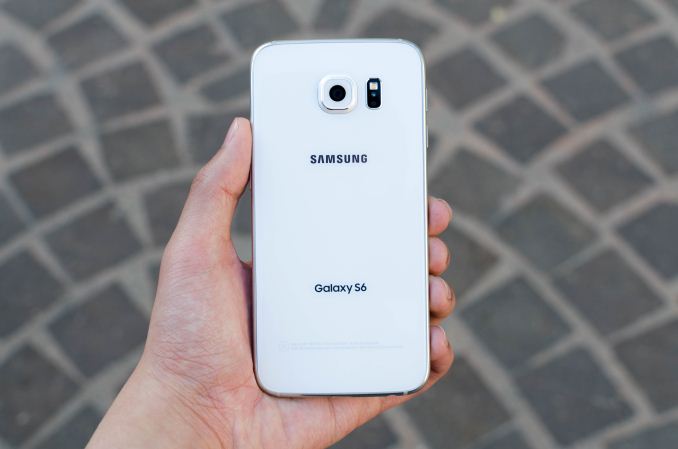
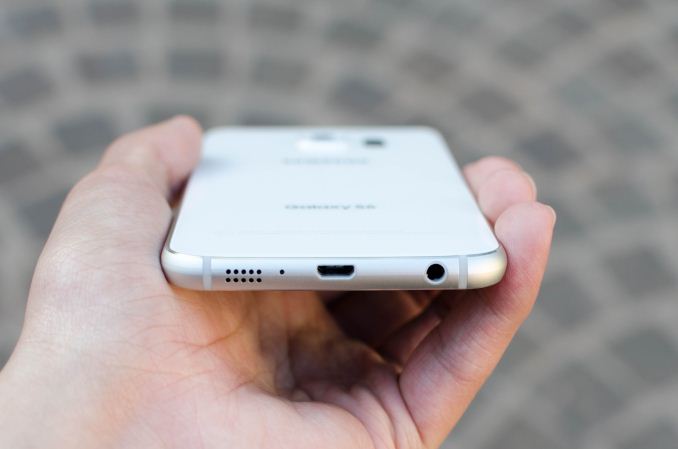
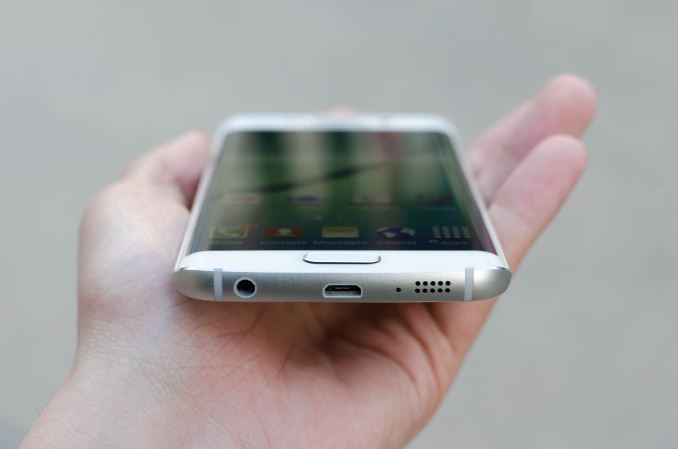



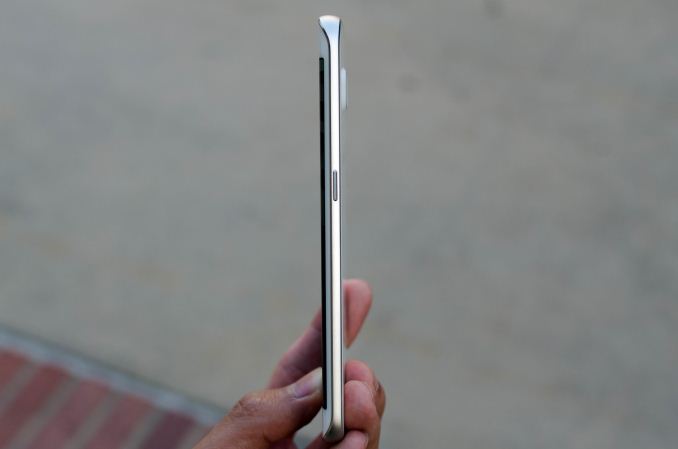

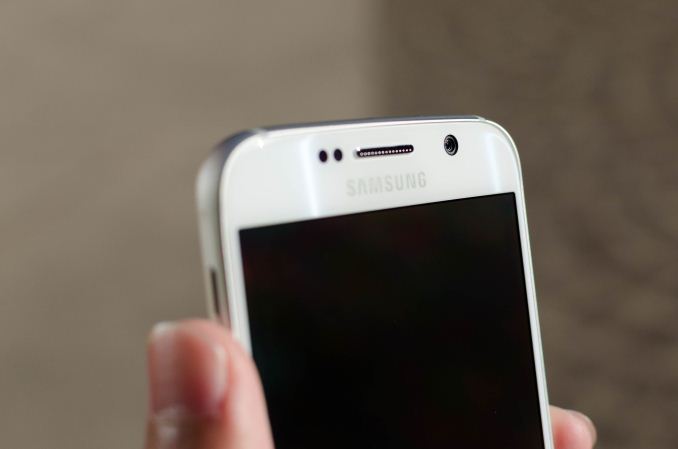
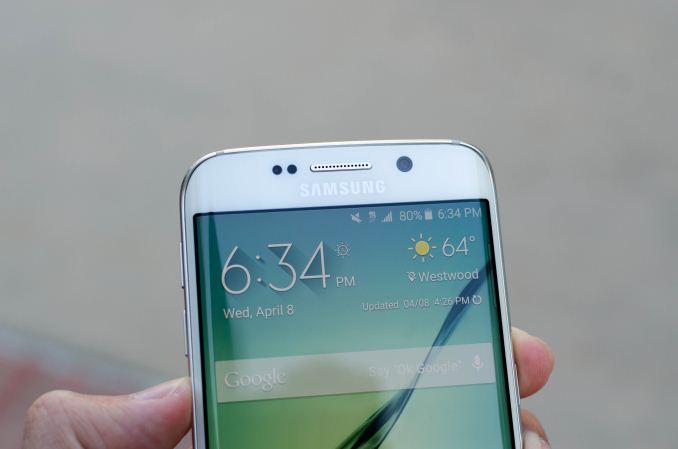








306 Comments
View All Comments
JoshHo - Friday, April 17, 2015 - link
Something similar to the APx582 would be necessary to test 3.5mm output accurately, and a good SPL meter would help with speaker quality although I'm not sure results for the latter would be comparable between editors.IsthatyouBevis - Friday, April 17, 2015 - link
Wow, that camera comparison is really poorly done. Trying to compare what you seem to think are the 2 best cameras (iPhone 6+ and S6) was extremely difficult. Why do you present the galleries in such a way as it is impossible to determine which picture to click to see which phone and why can't we see them clearly in the same page, instead of the click fest you force us to go through? Surely there is a better way to demonstrate this?johnnohj - Friday, April 17, 2015 - link
1. Were these photos taken with Auto-HDR enabled? If I am not mistaken, both the iPhone and S6 ship with Auto-HDR turned on by default. Those impressive low-light photos Samsung showed at the unveiling were taken with Auto-HDR enabled.2. Can immersive mode (full-screen) be disabled on Samsung apps like Calculator and S-Planner?
3. Were there any problems with RAM management like in this video https://youtu.be/hUw9PUlFUF0?t=1m32s where the S6 keeps killing apps in the background? It could explain the poor battery life some people are experiencing as apps would have to be killed and reloaded all day.
4. Can heads-up notifications be disabled?
5. I wish there was a way to test standby battery usage. It is something android phones have always been poor at compared to iPhones. How about a test where the x most popular apps (like Facebook, Gmail, WhatsApp, Instagram, Twitter with the same accounts, sync enabled) are installed to multiple test devices on the same wifi network and the battery usage is measured after x hours?
6. Why does Samsung still include the Quick Connect and S-Finder buttons in the notification slider? It's so annoying, and there is no way to disable them without root (except on a few US carrier versions).
Hrel - Friday, April 17, 2015 - link
No sd card is pretty bad, but being Samsung is worse.khujin - Friday, April 17, 2015 - link
I just tested GS6 edge 64GB and Androbench4.0 result is 320MB/s(seq. read), 140MB/s(seq. write) with default setting. And another website GS6 performance review it the same as mine. please check the UFS test.JoshHo - Friday, April 17, 2015 - link
The default sequential test does 32MB sequential reads which is wildly unrealistic at best. As shown in the storage performance section we test using 256KB reads and writes for sequential performance.heartinpiece - Saturday, April 18, 2015 - link
Nice review Joshua! I don't see any Ipad Air 2 performances in the performance charts (although they are constantly referenced...) could you check on the graphs?Peichen - Saturday, April 18, 2015 - link
Seems like there are only 2 company making real flagship phones now: Apple and Samsung. To achieve this status, buying off-the-shelf parts are no longer good enough. You need to custom order parts and optimize the software specifically for the parts. From SoC, memory, screen to camera, everything is custom ordered to achieve the best quality. Off-the-shelf phones like M9 and Nexus 6 are relegated to good $500ish phone status.On the other hand, it is sad to see Samsung abandon all its believes and completely adapted Apple design and philosophy. Nano-SIM, downward speaker, simplified camera UI, fingerprint magnet back, home-button scanner and the abandonment of colorful UI and screen tone. Samsung users always love the punchy screen color. What are they going to say now the school is color corrected like iPhone display?
Peichen - Saturday, April 18, 2015 - link
screen*Impulses - Saturday, April 18, 2015 - link
Maybe, I think LG or Sony could still step up to the plate... Sony's got a whole bunch of outside issues threatening the future of it's phone division tho, and probably their budget. Which is a shame because they made the only SMALL flagship phone last year in the Z3c.The bigger issue at play might be that a good chunk of the market is now complacent with their $500 or less also-rans, and another sizeable chunk is just buying outgoing models instead of the current hotness. Otherwise the SGS5 should've sold even better than the 4, and it had every right to based on hardware alone.
I'm part of that segment tbh, huge Android fan, initially went thru three successive HTC phones year after year... Not really feeling that upgrade bug anymore, at all. I'd like better battery life than what my N5 offers, and/or water resistance, can live without either for now.
My phone isn't my main camera so I'm an exception there but I don't think the average buyer even realizes what makes for a better camera or reads AT to find out.